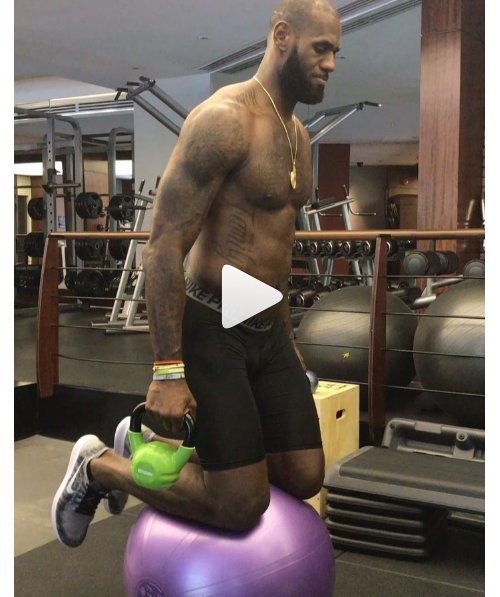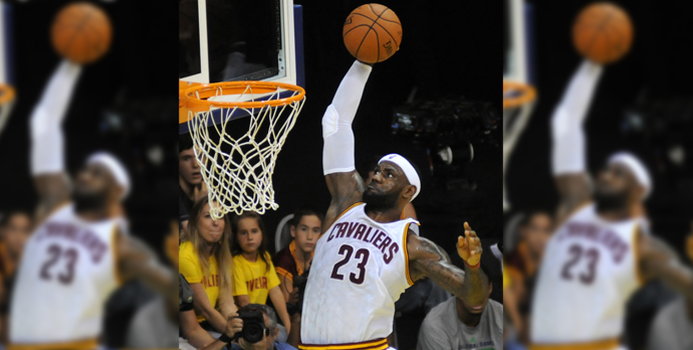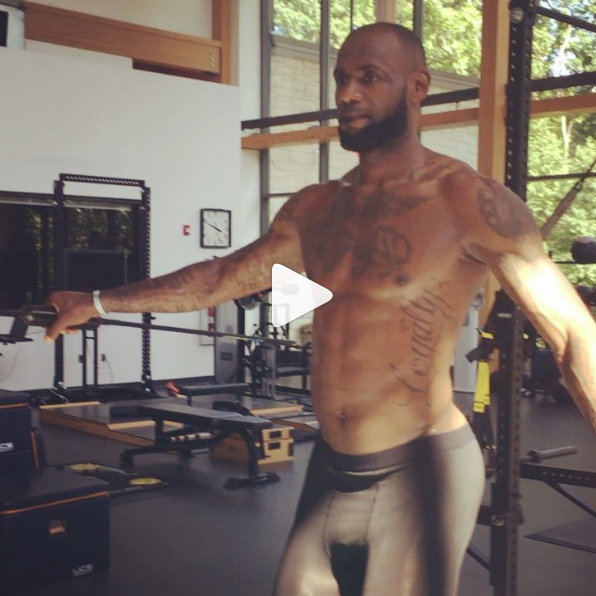There's no doubt that LeBron James is more than just one of the world's top athletes—he's also one of the fittest! His extreme conditioning is what enables him to keep charging down the court, leaping high into the air for those insane dunks, and playing at full intensity for hours at a time.
Recently, he posted a video showcasing an incredibly challenging core workout movement:
It may not look like he's working hard, but you have no idea how tough that movement really is!
The movement combines two things:
- Keeping his balance on a stability ball. Already, the unstable platform of the stability ball makes it challenging enough to keep his balance on his knees. Adding in the moving BodyBlade kicks the difficulty level up to 11!
- Keeping the stability ball from moving. This is the hardest part of the exercise. Balls want to roll, so keeping the stability ball in one place requires a significant amount of core strength. You can hear how exhausting this effort is when you watch the video.
In another video, he performs a similar movement using kettlebells:

But what makes these exercises so effective?
Obviously, the workout forces a constant contraction of the core muscles. Think about how your core is continuously contracted while doing a plank, and that's what you get from this exercise. Your core has to be flexing all the time in order to keep your lower body, core, and upper body stable on the unstable surface of the stability ball. By moving the BodyBlade around, LeBron is forcing his body to correct instabilities from a wide variety of angles. This leads to better overall development of core muscles.
But the real kicker is in the proprioception, or the "unconscious perception of movement and spatial orientation arising from stimuli within the body itself."
Your stability originates in your core, and it spreads outward through your upper and lower body to your limbs. This movement focuses on building that perception of stability by stimulating the muscles to react to an unstable environment. Basically, it teaches your core muscles to work quickly to keep you steady no matter what. It's more than just a balance movement—it will help you to have better coordination and make quick lateral movements with greater ease.
Best of all, it will reduce the risk of injury. Not only will it strengthen your core (including the spinal muscles that protect your vertebrae), but it will enable your muscles to activate more quickly. If you are bending, falling, twisting, or spinning, your core muscles will be better able to correct any instabilities before your spine is engaged. This can help to drastically reduce lower back injuries overall!
[Image via Shutterstock]





